
For vehicles at different levels, the amount of data that needs to be collected also increases exponentially. Taking the currently common L3 stage as an example, with the introduction of 4K ultra-high-definition cameras, 128-line lidar and other sensors, the amount of data recorded by the data collection system for 8 hours a day is as high as 30TB. Let’s put it this way, Nvidia’s self-driving technology tests also show that the vehicle learning data collection system can fill a terabyte-level solid-state storage drive (SSD) in a few hours.
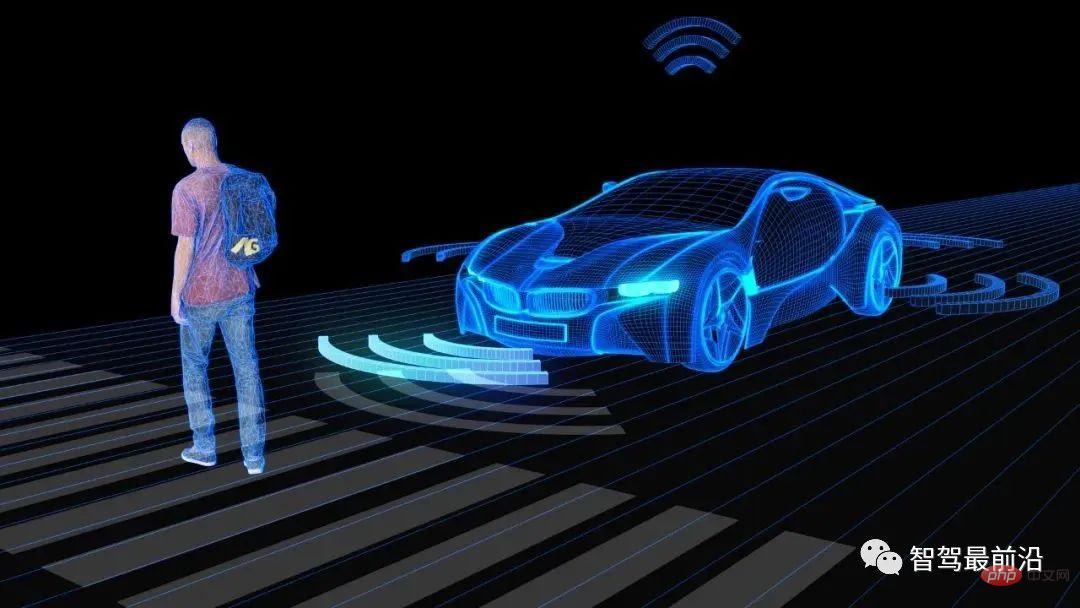
As we all know, there are five levels of automotive automation. The greater the degree of automation, the greater the amount of data storage required. For example, Level 2 autonomous vehicles require full human operation, but have additional automated systems such as lane change assistance, blind spot detection or automatic parking functions. Bowman believes that level 2 autonomous vehicles will require 4 to 10 petabytes of data.
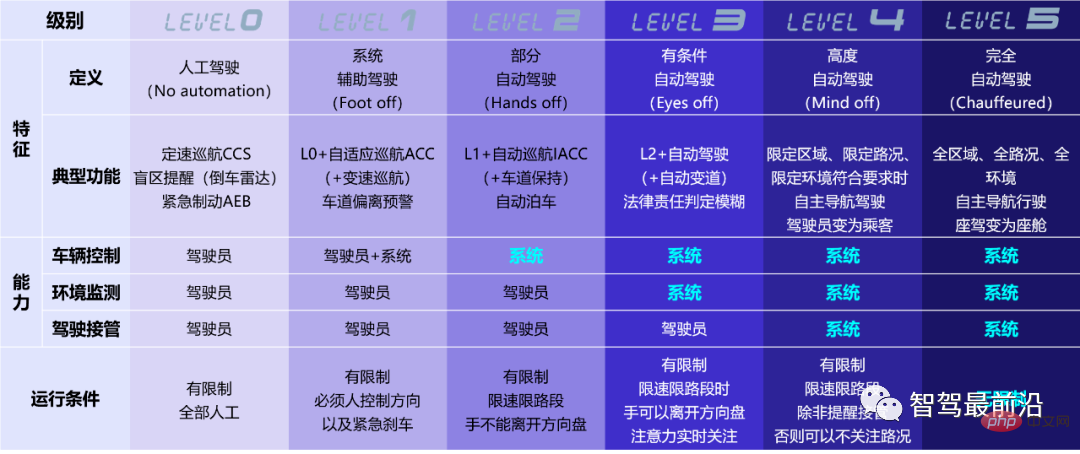
However, level three autonomous vehicles require 50 to 100PB of data storage, and level five autonomous vehicles require more than 3EB of storage space. "Level 3 means the car can drive itself," Bowman said. "Level 5 means the car can drive itself." "Level 5 means the car can drive completely autonomously," Bowman said.
While the amount of data storage required for self-driving cars is enormous, the challenge does not stem from the storage phase, but the transmission phase. For example, Bowman said, getting the vehicle on the road to record data from Each vehicle can generate 80 terabytes of data per day when collecting data from cameras, laser scanners and radars.
He said: “Then you have to connect the vehicles via data lines to get the data from The vehicle systems are transmitted to the data center, where the data is then copied from the R&D center to the data center. Typically, our customers have a centralized database in each continent, and data transfer can be achieved through accelerated file transfer methods or physical means."
Introducing some specific research on data management :
Since edge nodes can provide services to multiple users (vehicles) within a certain range at the same time, Resource allocation and user task competition issues are the main factors affecting performance. A certain document transformed the competition conflict problem in the vehicle task offloading process into a multi-user game problem, proved the existence of the Nash equilibrium of the problem, and implemented a distributed Computational offloading algorithm.
Further to the above literature, optimization analysis is carried out on the three aspects of communication rate, reliability and delay in the task offloading process, and a wireless wireless network that supports service quality awareness is proposed. The network resource management framework splits the resource allocation problem into three sub-problems: vehicle cluster segmentation, resource block pool allocation between clusters, and resource allocation within the cluster, and implements an optimization method based on graph theory:
In view of the problem of frequent edge node switching caused by high mobility of vehicles, the above literature believes that the connection between vehicles and nodes needs to be maintained longer. If it is lost after a short period of time, it will cause an increase in processing time and energy consumption. A task replacement algorithm is proposed. According to the calculated replacement time, the processing task is offloaded from the original node to the next feasible target node and the task continues to run.
At the same time, the researcher is not limited to a single complete task offloading, but implements a partial offloading strategy for a series of tasks.
For the entire In terms of the offloading process, both the performance of the vehicle terminal and the edge service node terminal need to be taken seriously. The DDORV algorithm can couple the vehicle terminal and the node terminal based on the current system conditions (such as channel quality, traffic load) and contain a large amount of status information. Stochastic optimization problems with control variables are considered simultaneously.
Specifically, this algorithm decouples the bilateral stochastic optimization problem into two independent frame-wise optimization problems based on the Lyapunov algorithm: For vehicles, the offloading strategy is selected by comparing the local processing cost with the task offloading cost, CPU The adjustment frequency is calculated through the proposed objective function; for the edge node, a lightweight resource supply algorithm is first proposed, and then based on an iterative algorithm that jointly optimizes wireless resources and energy consumption, a continuous relaxation method and a Lagrange dual solution are proposed coupling algorithm.
At the same time, the researcher chose TV white space for wireless data transmission between vehicles and edge nodes, making up for the limitations of traditional cellular, Wi-Fi and other technologies. disadvantages and improves communication efficiency.
At the same time, for multiple users in a certain area, there are usually multiple nodes to provide choices. The JSCO algorithm transforms the load balancing and task offloading decision-making problem in a multi-node, multi-user context into a mixed integer nonlinear programming problem, and can calculate with low complexity the three issues of node selection, computing resource optimization, and offloading plan decision-making. Maximize system utilization while maintaining latency constraints.
Some professionals say that 5G is crucial to the development and production of autonomous vehicles. Especially in the next 5 to 10 years, more technologies will be integrated into cars. He said: "Today's cars are mobile data centers on the road. Therefore, the data in the vehicle must be pre-processed, for example, to identify valuable data worthy of transmission to the data center via 5G."
He also said that self-driving cars need to store edge data, that is, store data in the car. "You need compute edge storage, especially in places where there's no 5G coverage. That's another problem because you have to cache the data in the vehicle to send it once there's a 5G signal."
Another issue related to 5G is upload speeds. Some professionals said: "5G is designed for high-speed download streaming data, so the upload speed is not that fast. Therefore, you cannot really upload a large amount of data through 5G. It is designed for transmitting data from the data center to the end user rather than from the vehicle." It is designed to reach data centers. But the advantage of 5G is its low latency."
The Cyberspace Administration of China issued the "Several Provisions on Automotive Data Security Management (Draft for Comments)" on May 12 last year "(referred to as "Opinion Draft") caused a small fluctuation, but it seemed to have quickly sunk into the "bottom of the pond" and was overshadowed by the excitement in the automotive industry such as cross-border car manufacturing. But automobile companies know very well that this is not only a data security risk control plan brought about by the Tesla controversy. On a deeper level, the "curse" warning of collecting user data has been sounded. "If this regulation is finally implemented and strictly stipulates that data can only be left in the car, and car companies do not activate new legal data acquisition channels, then the development of domestic autonomous driving technology may really be delayed for several years," said a certain An industry authority said on condition of anonymity.
But not all car companies choose to wait and see. User driving data on real roads is an important support for car companies to iteratively upgrade and improve their autonomous driving technology. To this end, some companies have begun to create new business models for data acquisition. In April this year, SAIC Zhiji released the mining method of user digital assets "rough stone" based on its CSOP (Cus-tomerShareOptionPlan) user data rights platform. It hopes to realize data transactions with users through this platform. The specific operation method is: Zhiji Automobile used 4.9% of the founding round equity for the CSOP plan and launched 300 million "raw stones", of which 70% of the rough stones need to be redeemed by car owners through the data generated by daily driving vehicles. After users obtain the rough stones, they can upgrade software and hardware products and obtain corresponding data rights.
Zhiji is currently the only car company in China that proposes data transactions with users. Although its platform was launched before the release of the draft of new regulations, it is considered to be a regulatory trend. A solution from Yanxia. "I think it's quite interesting. It's a model innovation." Liu Jianhao, head of Baidu Apollo information security, told a reporter from the Economic Observer. The above-mentioned authorities also believe that this model is groundbreaking. Prior to this, car companies collected most vehicle data by default, and equal transactions were never achieved. However, some experts believe that due to the many uncertainties, this model may be just an attempt under the Internet thinking of car companies, and it is difficult to say whether the implementation will be smooth or not.
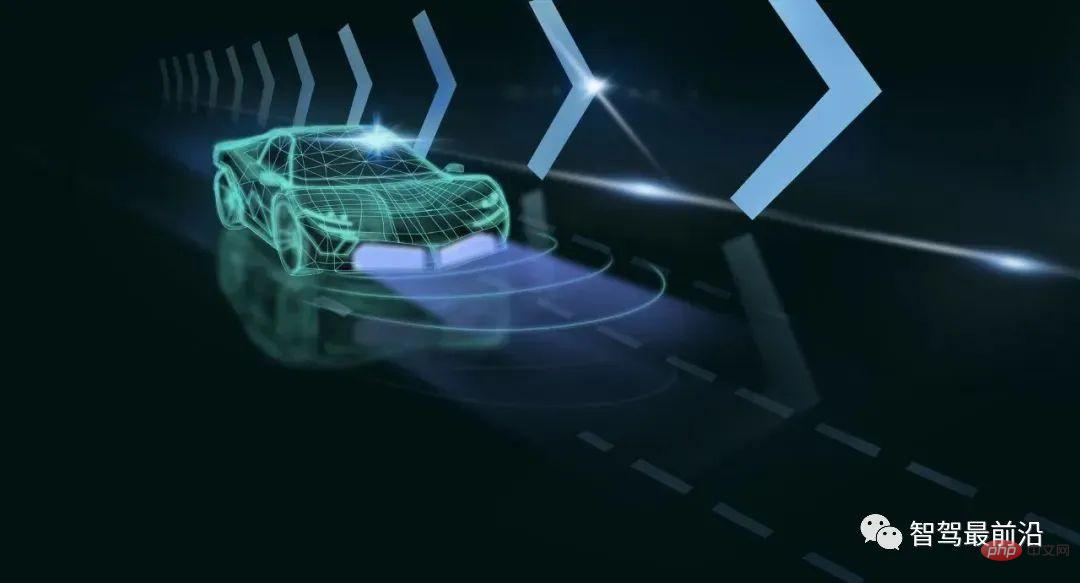
Behind the discussion of Zhiji Auto’s data trading model, it reflects the crisis that it will become increasingly difficult for car companies and the industry to collect user data for smart cars. feel. According to the "Opinion Draft", car companies "do not collect user personal information and important driving data by default", or at least need to obtain user consent every time. This means that the data collection channel may be blocked, which will inevitably have an impact on the current booming autonomous driving applications.
Under this circumstance, can SAIC Zhiji’s data trading model become an industry trend? Between the needs of user data security and the development of intelligent driving technology, are there other feasible data sharing models? Time is running out for the industry to find solutions.
In interviews with reporters from the Economic Observer, many experts expressed their opinions on the relationship between Zhiji Auto and The mode of data transactions by users has been given certain recognition. Mei Songlin, a senior analyst in the automotive industry, believes that this model can enhance the transparency of data collection by car companies and allow car companies and users to benefit from each other. Lu Wenliang, general manager of CCID Consulting Automotive Industry Research Center, said that this shows that car companies are beginning to adopt a "crowdsourcing" model similar to that of Internet companies, which is somewhat advanced.
But the industry has different views on whether this model will become an industry trend. "I think in the future, companies (like Zhiji) may come up with some good ways to stimulate users to provide data." Liu Jianhao believes that adopting this model can not only help car companies obtain data, but also through the accumulation of data It will greatly promote the development of smart cars. "Data is a basic element in the mobile Internet era and is crucial. The same is true for smart cars." Liu Jianhao said. Liu Jianhao made an analogy with the development of the mobile phone industry, "(Before) Nokia itself had little data. As the content of smartphone applications increased, it directly ushered in a mobile Internet era." Liu Jianhao said.
However, some people believe that there are still many uncertainties in the data trading model. On the one hand, because it is a new model, it is difficult to set the amount of data transactions and rewards. "If the setting is low, no one will participate. If the setting is high, it will not be cashed out later, which will damage the brand." Lu Wenliang said. At the same time, in response to the view that data may promote the overall development of smart cars, Lu Wenliang believes that to use the "crowdsourcing" model to achieve development, the product should first be relatively good before it can use user data to form a virtuous cycle. In the case of semi-finished products, it will cause A vicious cycle, and the current smart cars cannot be said to have been developed and perfected. Therefore, it is hard to say whether this new data acquisition model represented by Zhiji Automobile will become a trend. "It is probably just an attempt by car companies under the Internet thinking. Internet There are many operating models. Try them all. If they don’t work, you can change them.” anxiety. "Now car companies are having a headache with the latest data collection requirements. Regarding this draft, most of the feedback from companies focuses on changes in data collection methods." Lu Wenliang pointed out to a reporter from the Economic Observer that if the new regulations are implemented, It will definitely have a big impact. "The main reason is that too much data was collected in the past, and the business model of many companies is to collect data without authorization."
You can see The new regulations on automobile data security management mainly restrict the collection of two types of data - important data and personal information. The important data includes "vehicle types, vehicle traffic and other data on the road", which is considered to be important data required for autonomous driving to collect road scenes. In addition, personal in-car operations in personal information are also considered an important channel for car companies to collect user habits. However, the new regulations determine that this information is "not collected by default" and even if it is collected, the authorization is "valid only once", which may block the current data collection channels of car companies.
The black box of intelligent driving - Huawei data management method
In recent years, smart driving cars have become a new development trend in the automotive field. More and more cars have adopted assisted driving systems (ADAS) and autonomous driving systems. Such systems use vehicle-mounted mobile data centers ( MDC) and vehicle-mounted sensors can intelligently detect obstacles, sense the surrounding environment and automatically decide the vehicle's path and control the vehicle's driving status during driving. Intelligent driving technology has brought revolutionary opportunities and challenges to the automotive field. More and more manufacturers are committed to improving the driver's experience in driving through intelligent driving.
In addition, the safety of smart driving cars has also attracted widespread attention in the industry. Traditional human-driving cars usually use black box equipment to record the vehicle’s engine speed and vehicle speed before and after an accident. , brakes, accelerator and seat belt status, while the black box is a type of equipment installed on the car and has high damage resistance. When a car has a violent collision, the black box can use the data provided by the acceleration sensor connected to the black box device in the car body to determine whether the vehicle's acceleration exceeds the preset threshold in a short period of time, and then collect and store body data.
However, compared with traditional human-driven vehicles, smart-driving cars have different limitations in application scenarios, driver driving habits and styles, how each system in the smart-driving car works, and how they interact with surrounding facilities. The relationship with cars has undergone tremendous changes. The safety of smart driving cars has also put forward higher requirements for black box data management methods. Therefore, how to provide a more effective black box management suitable for smart driving cars? Methods become technical problems that need to be solved.
In order to solve this problem, Huawei applied for an invention patent titled "Management Methods, Devices and Equipment for Black Box Data in Intelligent Driving Cars" on August 7, 2019. (Application number: 201910726567.X), the applicant is Huawei Technologies Co., Ltd.
Based on the currently disclosed information of this patent, let us take a look at this black box data management method.
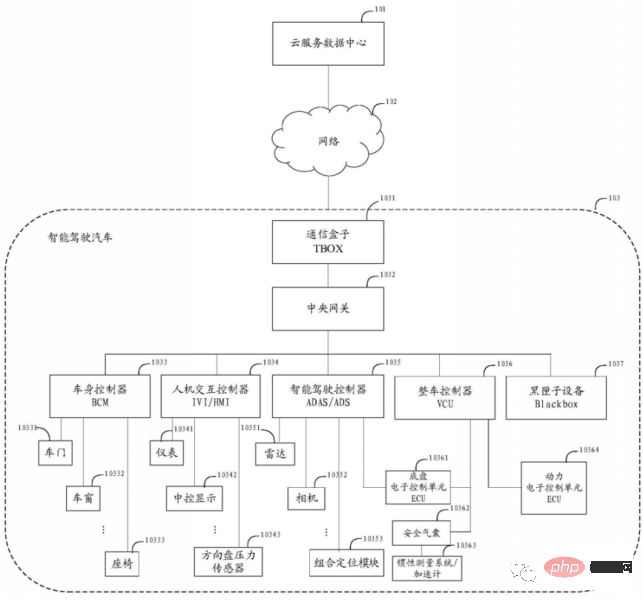
As shown in the figure above, it is a schematic diagram of the logical architecture of the black box data management system of the smart driving vehicle invented by this patent. The system includes a cloud data center 101 , the network 102 and the intelligent driving vehicle 103, the cloud data center 101 and the intelligent driving vehicle 103 communicate through the network 102.
Among them, the cloud service data center can provide cloud service data centers for storing black box data, including private cloud, public cloud and hybrid cloud type data centers; the network can be implemented A medium for transmitting black box data in smart driving cars to cloud service data centers.
Looking at the entire intelligent driving vehicle, it includes communication box 1031, central gateway 1032, body controller (BCM) 1033, human-computer interaction controller 1034, and intelligent driving controller 1035 , vehicle controller 1036 and black box device 1037. The communication box is used to realize communication between smart driving vehicles and cloud service data centers; human-computer interaction controllers include in-vehicle entertainment control systems such as in-vehicle entertainment (IVI) and hardware monitor interfaces (HMI), which are responsible for the interaction between people and vehicles. They are usually used It is used to manage instruments, central control displays, steering wheel pressure sensors and other equipment.
The vehicle controller (VCU) is usually connected to the chassis electronic control unit, airbag and power electronic control unit, and the airbag is usually connected to the inertial measurement unit, through the inertial measurement unit Detection can determine whether the smart driving car is in an emergency braking state. If the smart driving car is in this state, the airbag can pop up to protect the driver's safety.
Finally, there is the most mysterious black box in the vehicle. The black box device is used to record the body data of the smart driving vehicle in emergency situations. These data include: engine speed, vehicle speed, and braking strength. , steering angle, throttle plate status, seat belt status, etc., as well as the timestamp when these data are generated. When a car crashes, this data is often the most important data for investigators to analyze the accident.
Next, we will introduce in detail the management method of black box data in smart driving cars provided in the patent in conjunction with the figure below, as shown in the figure.
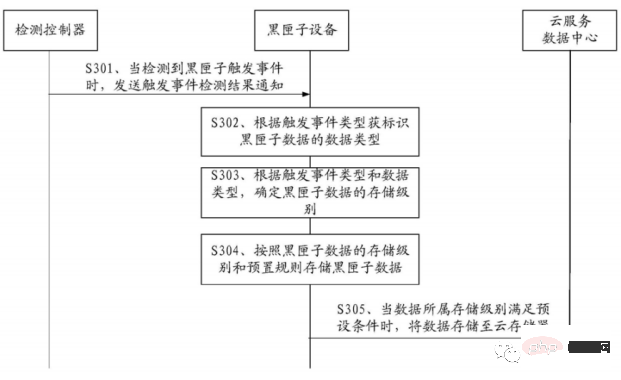
First, when the detection controller detects a black box trigger event, the detection controller sends a trigger event notification to the black box device. Secondly, the black box device identifies the data type of the black box data according to the trigger event type. The black box trigger events that the detection controller can detect include driving mode conversion events and driving risk boundary events. Among them, the driving mode conversion events can be subdivided into the following two types: Situation:
1) The driver switches the driving mode of the smart driving car to the smart driving mode: When the smart driving car is manually driven and the smart driving system detects that it meets the smart driving turning on conditions, The driver is notified through the human-computer interaction controller, and the driver triggers the smart driving car to switch to the smart driving mode through a button. At this time, the human-computer interaction controller notifies the black box device that there is a black box trigger event.
2) The driver actively switches the driving mode of the smart driving car to non-intelligent driving mode: When the smart driving car is in smart driving mode, the driver can press the brakes and turn the steering wheel , the human-computer interaction controller mode switching method actively switches the smart driving vehicle to non-driving mode. At this time, the black box data trigger event can be detected through the human-computer interaction controller, and the black box device is notified of the black box trigger event.
Then, the black box device determines the storage level to which the data belongs based on the trigger event type and data type, and stores the data according to the storage level to which the data belongs and preset rules. When the storage level to which the data belongs meets preset conditions, the black box device will send the black box data to the cloud service data center. In this way, by grading the storage method of data, the highest level will save the book to the cloud, thereby ensuring the security and effectiveness of the data.
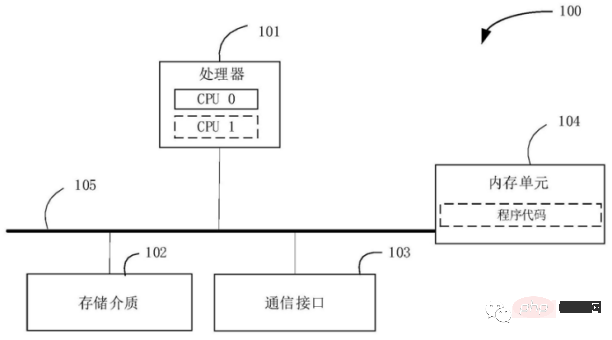
The last is a schematic structural diagram of the black box device of this smart driving vehicle. It can be seen that the black box device includes a processor 101, a storage medium 102, Communication interface 103 and memory unit 104. Among them, the processor, storage medium, communication interface, and memory unit communicate through the bus.
The above is the black box data management method invented by Huawei. By upgrading the management method of the data in the black box, and storing the black box data in local and cloud storage at the same time, and for the black box The data is stored hierarchically, which effectively improves the effectiveness and security of the black box data in smart driving cars, and also improves the overall safety of the entire smart driving car.
The above is the detailed content of Analyzing big data management in autonomous driving technology. For more information, please follow other related articles on the PHP Chinese website!




